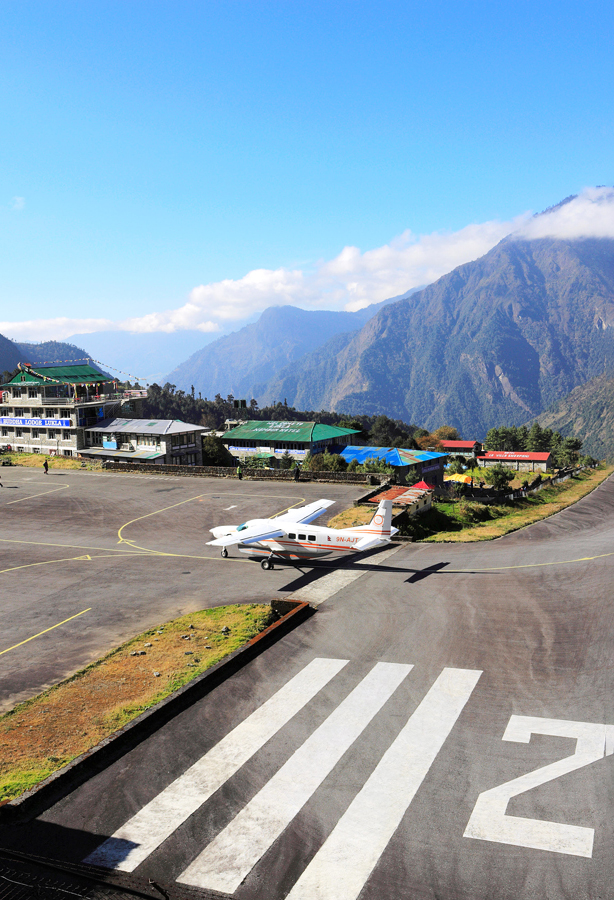In 2024, a record 40.1 million passengers are estimated to take to the skies. Of the world’s 41,000 airports, Atlanta Hartsfield-Jackson International Airport takes the crown as the world’s busiest. On the other end of the spectrum are airports that far fewer passengers travel through, but which are noteworthy for much more unusual qualities. From a unique runway made entirely of ice to one of the world’s most dangerous approaches, take a journey to 10 of the most extreme airports in the world.
Princess Juliana International Airport – St. Maarten
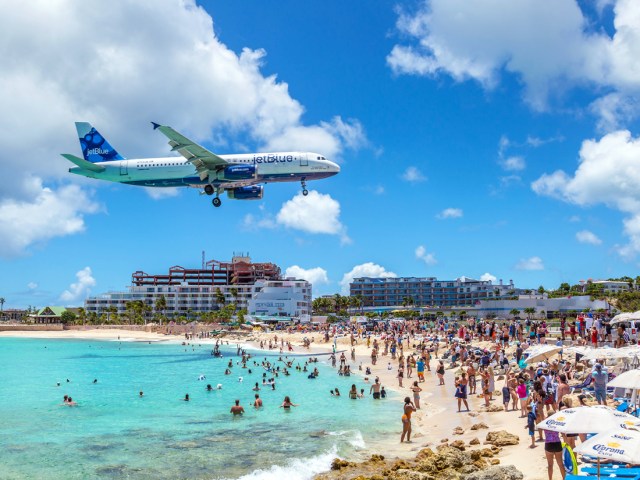
Airplane enthusiasts from all over the world flock to Maho Beach, on the Dutch side of the Caribbean island of St. Maarten. What makes this particular stretch of sand so special are the unforgettable views of planes as they arrive at Princess Juliana Airport. The airport’s runway is just over 7,500 feet in length and reaches almost to the sand, forcing pilots to come in low across Simpson Bay and use nearly the entire length of the runway. And when the planes take off, the force results in waves of white sand kicked up by their powerful jet blast. Plane spotters set up in the sand with chairs, binoculars, and (hopefully) ear protection to get unbelievably close views of jets as they make their thrilling low-altitude approaches.
St. Helena Airport – St. Helena, Ascension, and Tristan da Cunha

One of the most remote islands in the world, St. Helena lies in the middle of the South Atlantic, 1,200 miles west of Angola and 2,500 miles east of Brazil. Best known as the site of Napoleon’s final exile, the tiny island — less than 50 square miles — was previously reachable only via a five- to six-day boat trip from South Africa, weather permitting. That changed when St. Helena Airport finally opened in 2016, though it was dubbed “the world’s most useless airport” after many delays in construction. And due to weather conditions that made landing on the runway difficult, it wasn’t until a full year later that regular commercial services began.
Weekly flights now connect St. Helena and its 4,000 residents to South Africa, as well as serve the island’s burgeoning tourism industry, but pilots have to be specially trained to land here. The airport itself isn’t particularly noteworthy, but the remote location of the island and the notoriously challenging runway make it a unique destination.
Barra Airport – Eoligarry, Scotland

Flying off to a beach destination has never been more literal than at this airport in Scotland’s windswept Outer Hebrides islands. On Barra island, the hard-packed sands on the bay of Traigh Mhòr are the runway — the only one of its kind in the world. Since there’s no asphalt, planes use the beach for takeoffs and landings, keeping a close eye on the tides and ever-changing weather conditions. The airport offers regularly scheduled flights to Glasgow.
Gibraltar International Airport – Gibraltar
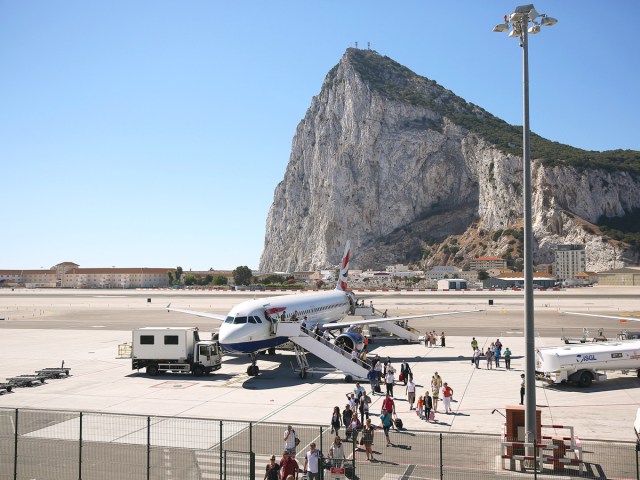
The rocky outcrop of Gibraltar, a British Overseas Territory, straddles the eponymous strait that separates Europe and North Africa. In a similar fashion, the sole runway at this unique airport is separated by Winston Churchill Avenue. The highway is the only roadway that connects the island to Spain’s mainland, and it must be closed every time a plane arrives or departs. Along with the busy road bisecting the runway, the airport is exposed to strong cross winds around the Rock of Gibraltar and across the Bay of Gibraltar, making it one of the most fascinating airports in the world.
Tenzing-Hillary Airport – Lukla, Nepal

Aerodynamics make this domestic airport in Nepal’s high Himalayas one of the most dangerous in the world. Air density lessens at higher altitudes, forcing pilots to land at higher speeds. Named after Sir Edmund Hillary and Tenzing Norgay, the first climbers confirmed to have summited Mount Everest, the airport has just one short (1,729-foot) runway, which is made riskier by treacherous winds and the surrounding mountains. In spite of the perilous approach, the “gateway to Everest” is visited every year by thousands of tourists and climbers.
Ice Runway – McMurdo Station, Antarctica
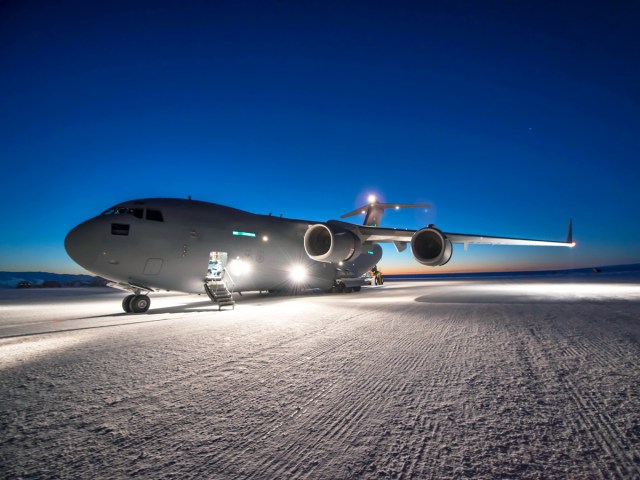
Antarctica’s McMurdo Station requires a considerable amount of cargo to support the scientists and crew conducting research at the bottom of the world. Asphalt is impossible to install, but ice is in plentiful supply. As a result, large aircraft such as the Lockheed C-130 Hercules land on a runway of groomed snow that is packed atop a layer of sea ice over deep and dangerous waters. The runway is reconstructed annually each summer and remains in operation until December, when the ice becomes unstable. Besides the main Ice Runway, there are two other nearby runways made of compacted snow and ice that serve McMurdo Station, Phoenix Runway and Williams Field.
Juancho E. Yrausquin Airport – Saba
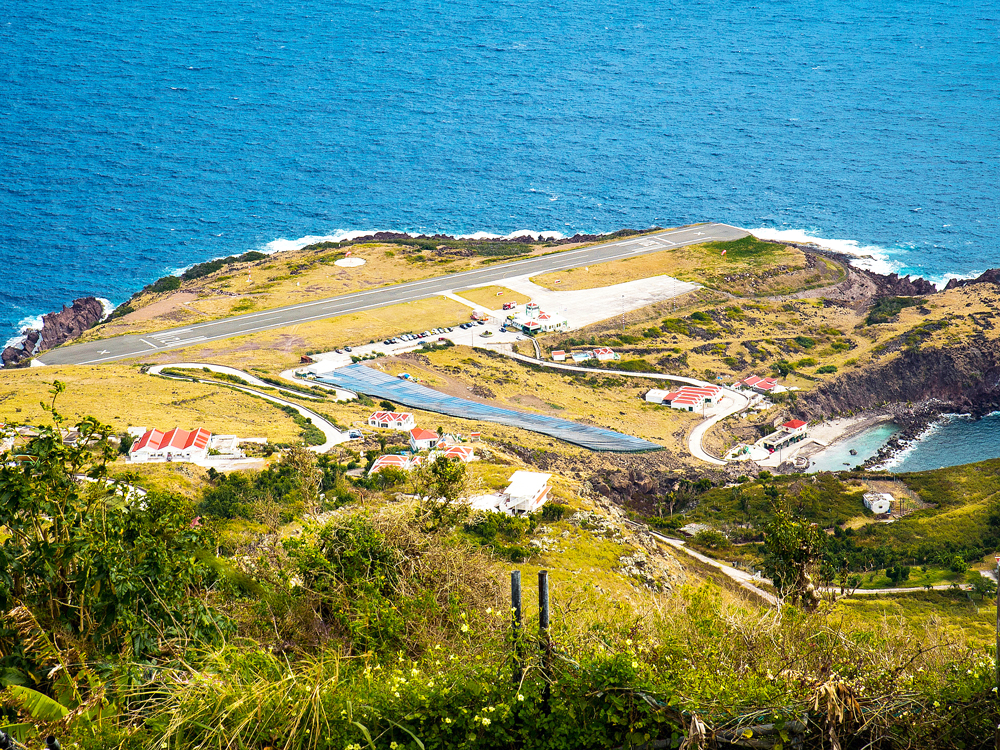
One of the smallest commercial airports in the world, Juancho E. Yrausquin Airport has a runway that barely measures 1,300 feet, earning it the Guinness World Record for shortest commercial runway on the planet. It measures slightly longer than the runway of a typical aircraft carrier, creating a real challenge for pilots landing their aircraft on the tiny mountainous island. With cliffs on one end of the airstrip and the Caribbean waters of Cove Bay on the other, Saba’s airport offers a true test of nerves on the 15-minute flights to and from the nearby island of St. Maarten.
Paro International Airport – Paro, Bhutan
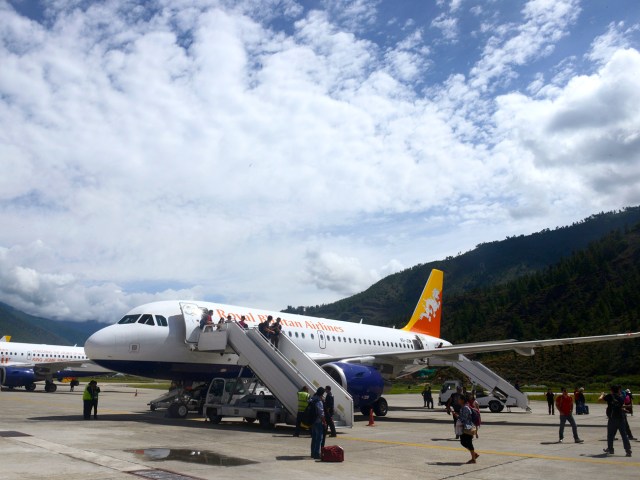
The only international airport serving the mystical Himalayan Kingdom of Bhutan, Paro International Airport is so challenging that fewer than two dozen pilots in the world are certified to fly there. The airport doesn’t have radar, so pilots must manually navigate (during daylight only) between 18,000-foot peaks into a narrow river valley. If that weren’t complex enough, the 7,431-foot runway is relatively short and only visible at the last moment — as pilots avoid rooftops and power lines while dropping in at a sharp 45-degree angle.
Svalbard Airport – Longyearbyen, Norway

The northernmost airport in the world with regularly scheduled flights, Longyearbyen’s Svalbard Airport was constructed by the Luftwaffe during World War II. Originally, only daylight flights were possible — a problem in a land where the sun doesn’t rise for months in the winter. In 1965, paraffin lamps were installed to illuminate the runway. Now modernized, the airport services the remote Norwegian archipelago, located only 500 miles from the North Pole, with flights from Tromsø and Oslo.
Daocheng Yading Airport – Garzê Tibetan Autonomous Prefecture, China

Almost 15,000 feet above sea level, on the Tibetan Plateau in the mountains of southwestern Sichuan province, China has built the world’s highest civilian airport. Constructed at a cost of $258 million USD, Daocheng Yading Airport features a futuristic spaceship-shaped terminal and is designed to handle 280,000 passengers a year. Opened in 2013, the airport replaced the two-day bus trip to the provincial capital of Chengdu with a one-hour flight and has increased tourism to the Yading Nature Reserve, one of the country’s most pristine natural areas.
More from our network
Daily Passport is part of Optimism, which publishes content that uplifts, informs, and inspires.






